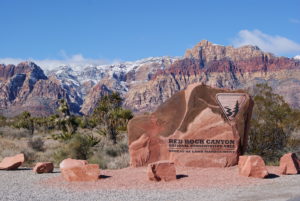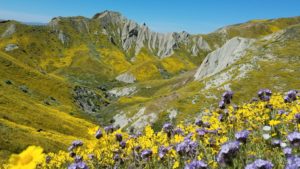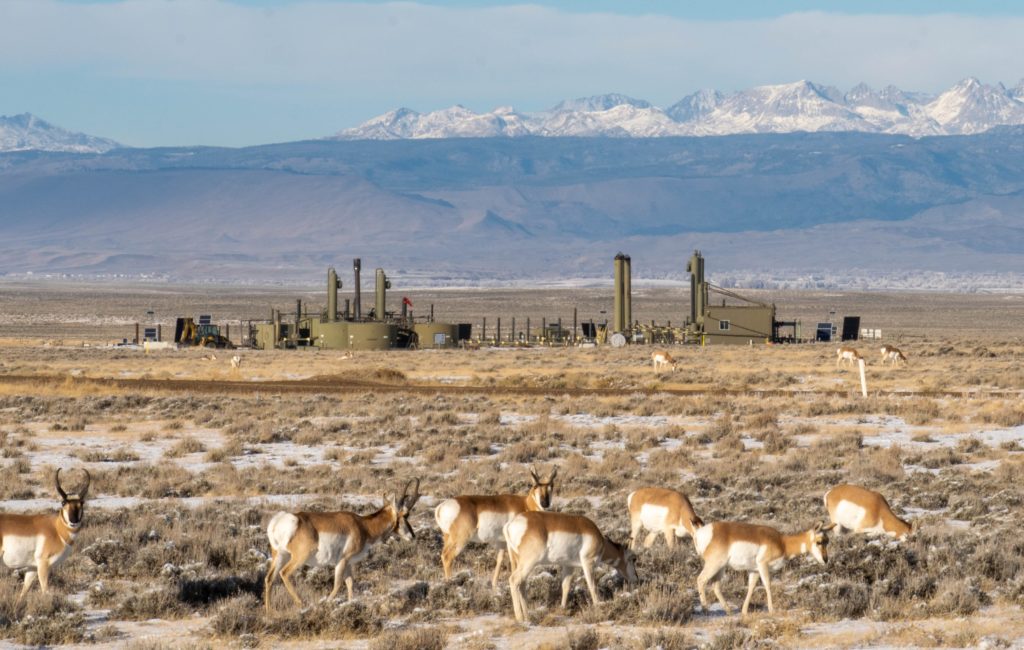 While national parks may be the most familiar type of public lands, another type of federal sites make up roughly ten percent of the land area of the US. More than 2,400 U.S. Bureau of Land Management (BLM) sites—from the Meadowood Trail System in Virginia to the Imperial Sand Dunes in California—have been set aside for a wide range of uses, including grazing, mining, and energy development, along with scientific, cultural, historical, and recreational purposes. But the BLM is also charged with conserving habitat for the wide variety of fish and wildlife that live on lands and waters managed by the agency. Now, a new BLM policy addresses the growing public concern over habitat fragmentation and the ability of species to move for their daily and seasonal needs.
While national parks may be the most familiar type of public lands, another type of federal sites make up roughly ten percent of the land area of the US. More than 2,400 U.S. Bureau of Land Management (BLM) sites—from the Meadowood Trail System in Virginia to the Imperial Sand Dunes in California—have been set aside for a wide range of uses, including grazing, mining, and energy development, along with scientific, cultural, historical, and recreational purposes. But the BLM is also charged with conserving habitat for the wide variety of fish and wildlife that live on lands and waters managed by the agency. Now, a new BLM policy addresses the growing public concern over habitat fragmentation and the ability of species to move for their daily and seasonal needs.
In November of 2022, BLM issued a new national policy aiming to maintain and restore connections between habitat to allow fish and wildlife to move across landscapes and watersheds on BLM lands. The policy—in the form of a memo to agency staff—elevates habitat connectivity to a fundamental part of BLM’s mission. The memo also encourages collaboration with state and Tribal agency partners to assess and conserve habitat connectivity. Finally, it provides direction for ensuring habitat connectivity is considered in BLM planning and decision-making processes.
BLM manages 1 in 10 acres in the United States
This policy could have major implications for habitat connectivity, as BLM is the nation’s largest landowner, managing 245 million acres, mostly in the western US. Additionally, BLM lands are exceptionally important for connecting large, protected areas, compared to other federal lands. As climate change and development increasingly degrade and fragment our western landscapes, proactively planning to protect existing migration routes and restore connections between seasonal habitat is more important than ever. This commitment by the agency will be vital to the conservation of iconic species like pronghorn, which range from Canada to Mexico across the interior western US, traversing BLM lands multiple times.
In short, the memo directs BLM staff to:
Acknowledge habitat connectivity as part of BLM’s mission
Perhaps the most significant element of the memo is that it establishes that conserving and restoring habitat connectivity is central to the BLM’s “multiple use and sustained yield” mandate, which balances managing public lands for activities like energy development, livestock grazing and recreation with managing them to conserve natural, cultural, and historic resources.
Identify “areas of habitat connectivity”
The memo directs BLM state offices to assess data on habitat connectivity, permeability, and resilience in order to identify “areas of habitat connectivity.”
Incorporate habitat connectivity considerations into planning & decision-making
Once the initial data assessment phase is complete, the memo directs agency staff to consider the identified habitat connectivity areas in the land use planning process and project-level decisions. For instance, a separate but related recent BLM memo clarifies that habitat connectivity could be a reason for establishing an Area of Critical Environmental Concern to protect the conservation value of the area.
 The Department of the Interior, the Forest Service, the Western Governors’ Association, and multiple states have released similar guidance in recent years aimed at better incorporating habitat connectivity into planning and project level processes. Ultimately, the BLM’s new national policy will improve coordination with other federal, state, and Tribal partners on assessing and conserving habitat connectivity. This will allow the BLM to more effectively address the growing threats of habitat fragmentation and climate change in order to conserve the nation‘s natural resources and natural heritage for future generations.
The Department of the Interior, the Forest Service, the Western Governors’ Association, and multiple states have released similar guidance in recent years aimed at better incorporating habitat connectivity into planning and project level processes. Ultimately, the BLM’s new national policy will improve coordination with other federal, state, and Tribal partners on assessing and conserving habitat connectivity. This will allow the BLM to more effectively address the growing threats of habitat fragmentation and climate change in order to conserve the nation‘s natural resources and natural heritage for future generations.
Photos, top to bottom: Pronghorn, Ultra Energy Field, Wyoming – BLM/Tara Boucher; Red Rock Canyon NCA, Nevada – BLM, Creative Commons license; Carrizo Plain National Monument, California – BLM/Sarah Bullock



